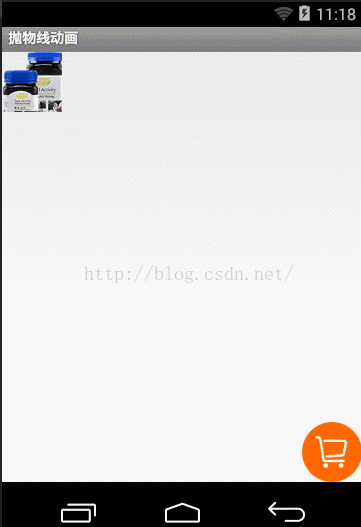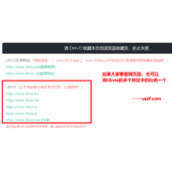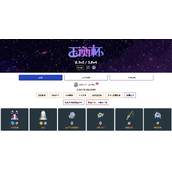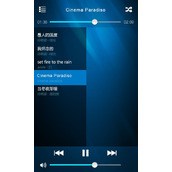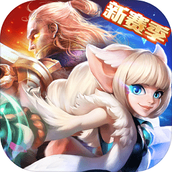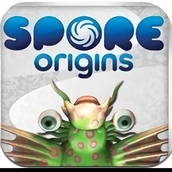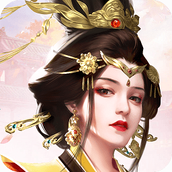Android仿天猫商品抛物线加入购物车动画
本文实例为大家分享了Android仿天猫加入购物车的具体代码,供大家参考,具体内容如下
先上效果图
实现思路:
首先,我们需要三个Imagview
第一个是原商品图片, 这个图片是布局文件中创建的 我们称作A
第二个是做动画的图片 这个我们是在代码中创建的 我们称作B
第三个是购物车图片 这个图片是布局文件中创建的 我们称作C
接着,我们需要将A图片设置给B
A图片一般是联网获取到的,给Imagview设置图片有两种方式
如果是通过setBackgroundDrawable 那么就通过getBackground()获取到Drawable对象,设置给B
如果是通过setImageDrawable 那么就通过getDrawable()获取到Drawable对象,设置给B
再接着 我们获取到A的位置 作为动画开始的位置 获取到C的位置 作为动画结束的位置
然后 创建动画图层,开始执行动画
这个动画集合中,包括: 水平位移匀速平移 竖直方向加速平移 缩放动画
最后 一定不要忘了 为我们的动画集合添加监听set.setAnimationListener
动画执行前让Imagview 可见 动画执行后让Imagview 不可见
下边是MainActivity中的代码
public class MainActivity extends Activity {
private ImageView top;
private ImageView bottom;
private ImageView animImageView;
private ViewGroup anim_mask_layout;// 动画层
@Override
protected void onCreate(Bundle savedInstanceState) {
super.onCreate(savedInstanceState);
setContentView(R.layout.activity_main);
top = (ImageView) findViewById(R.id.top);
bottom = (ImageView) findViewById(R.id.bottom);
}
public void startAnim(View view) {
// 记录开始的位置
int[] startLocation = new int[2];// 一个整型数组,用来存储按钮的在屏幕的X、Y坐标
top.getLocationInWindow(startLocation);// 这是获取购买按钮的在屏幕的X、Y坐标(这也是动画开始的坐标)
// 创建要做动画的ImageView
animImageView = new ImageView(this);
// 设置animImageView的背景
Drawable background = top.getBackground();
Drawable zoomDrawable = zoomDrawable(background, dip2Px(this, 200),
dip2Px(this, 200));
animImageView.setBackgroundDrawable(zoomDrawable);
// 开始执行动画
setAnim(animImageView, startLocation, top);
}
/**
* 设置动画
*
* @param v
* @param startLocation
* @param view
*/
private void setAnim(final View v, int[] startLocation, final View view) {
anim_mask_layout = null;
anim_mask_layout = createAnimLayout();
anim_mask_layout.addView(v);// 把动画小球添加到动画层
final View viewa = addViewToAnimLayout(anim_mask_layout, v,
startLocation);
int[] endLocation = new int[2];// 存储动画结束位置的X、Y坐标
bottom.getLocationInWindow(endLocation);// shopCart是那个购物车
// 计算位移
int endX = endLocation[0] - startLocation[0];// 动画位移的X坐标
int endY = endLocation[1] - startLocation[1];// 动画位移的y坐标
TranslateAnimation translateAnimationX = new TranslateAnimation(0,
endX, 0, 0);
translateAnimationX.setInterpolator(new LinearInterpolator());
translateAnimationX.setRepeatCount(0);// 动画重复执行的次数
translateAnimationX.setFillAfter(true);
TranslateAnimation translateAnimationY = new TranslateAnimation(0, 0,
0, endY);
translateAnimationY.setInterpolator(new AccelerateInterpolator());
translateAnimationY.setRepeatCount(0);// 动画重复执行的次数
translateAnimationX.setFillAfter(true);
ScaleAnimation scaleAnimation = new ScaleAnimation(0.6f, 0.1f,0.6f, 0.1f);
scaleAnimation.setInterpolator(new AccelerateInterpolator());
scaleAnimation.setRepeatCount(0);// 动画重复执行的次数
scaleAnimation.setFillAfter(true);
AnimationSet set = new AnimationSet(false);
set.setFillAfter(false);
set.addAnimation(scaleAnimation);
set.addAnimation(translateAnimationY);
set.addAnimation(translateAnimationX);
set.setDuration(600);// 动画的执行时间
viewa.startAnimation(set);
// 动画监听事件
set.setAnimationListener(new AnimationListener() {
// 动画的开始
@Override
public void onAnimationStart(Animation animation) {
v.setVisibility(View.VISIBLE);
}
@Override
public void onAnimationRepeat(Animation animation) {
}
// 动画的结束
@Override
public void onAnimationEnd(Animation animation) {
v.setVisibility(View.GONE);
}
});
}
/**
* @Description: 创建动画层
* @param
* @return void
* @throws
*/
private ViewGroup createAnimLayout() {
ViewGroup rootView = (ViewGroup) ((Activity) this).getWindow()
.getDecorView();
LinearLayout animLayout = new LinearLayout(this);
LinearLayout.LayoutParams lp = new LinearLayout.LayoutParams(
LinearLayout.LayoutParams.MATCH_PARENT,
LinearLayout.LayoutParams.MATCH_PARENT);
animLayout.setLayoutParams(lp);
animLayout.setId(Integer.MAX_VALUE);
animLayout.setBackgroundResource(android.R.color.transparent);
rootView.addView(animLayout);
return animLayout;
}
private View addViewToAnimLayout(final ViewGroup parent, final View view,
int[] location) {
int x = location[0];
int y = location[1];
LinearLayout.LayoutParams lp = new LinearLayout.LayoutParams(
LinearLayout.LayoutParams.WRAP_CONTENT,
LinearLayout.LayoutParams.WRAP_CONTENT);
lp.leftMargin = x;
lp.topMargin = y;
view.setLayoutParams(lp);
return view;
}
/**
* 将drawable对象进行指定大小的缩放
*
* @param drawable
* @param w
* @param h
* @return
*/
public Drawable zoomDrawable(Drawable drawable, int w, int h) {
int width = drawable.getIntrinsicWidth();
int height = drawable.getIntrinsicHeight();
Bitmap oldbmp = drawableToBitmap(drawable); // drawable 转换成 bitmap
Matrix matrix = new Matrix(); // 创建操作图片用的 Matrix 对象
float scaleWidth = ((float) w / width); // 计算缩放比例
float scaleHeight = ((float) h / height);
matrix.postScale(scaleWidth, scaleHeight); // 设置缩放比例
Bitmap newbmp = Bitmap.createBitmap(oldbmp, 0, 0, width, height,
matrix, true); // 建立新的 bitmap ,其内容是对原 bitmap 的缩放后的图
return new BitmapDrawable(newbmp); // 把 bitmap 转换成 drawable 并返回
}
/**
* 将drawable 转换成 bitmap
*
* @param drawable
* @return
*/
public Bitmap drawableToBitmap(Drawable drawable) {
int width = drawable.getIntrinsicWidth(); // 取 drawable 的长宽
int height = drawable.getIntrinsicHeight();
Bitmap.Config config = drawable.getOpacity() != PixelFormat.OPAQUE ? Bitmap.Config.ARGB_8888
: Bitmap.Config.RGB_565; // 取 drawable 的颜色格式
Bitmap bitmap = Bitmap.createBitmap(width, height, config); // 建立对应
// bitmap
Canvas canvas = new Canvas(bitmap); // 建立对应 bitmap 的画布
drawable.setBounds(0, 0, width, height);
drawable.draw(canvas); // 把 drawable 内容画到画布中
return bitmap;
}
// dp转换为像素px
public static int dip2Px(Context context, float dp) {
final float scale = context.getResources().getDisplayMetrics().density;
return (int) (dp * scale + 0.5f);
}
}
下边是布局文件中代码
点击这里
相关文章
精彩推荐
-
 下载
下载孢子2生物进化中文版(Spores)
模拟经营 孢子2生物进化中文版(Spores)孢子2生物进化中文版让我们来做一回疯狂的博士,打造一个属于自
-
 下载
下载叫我万岁爷九游官方版
模拟经营 叫我万岁爷九游官方版叫我万岁爷带你体验当换地点感觉,全新的模拟手游大作让你开始一
-
 下载
下载梦回凤歌
模拟经营 梦回凤歌梦回凤歌手游中你将步入古代的宫廷纷争之中,本想度过美好幸福的
-
 下载
下载洋果子店rose最新版本
模拟经营 洋果子店rose最新版本洋果子店最新版是一款十分容易让人垂涎的开店经营类手游。游戏玩
-
 下载
下载明日大亨最新版
模拟经营 明日大亨最新版明日大亨手游,一个非常经典有趣的模拟经营类型的商战手游,在游

